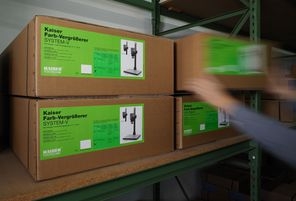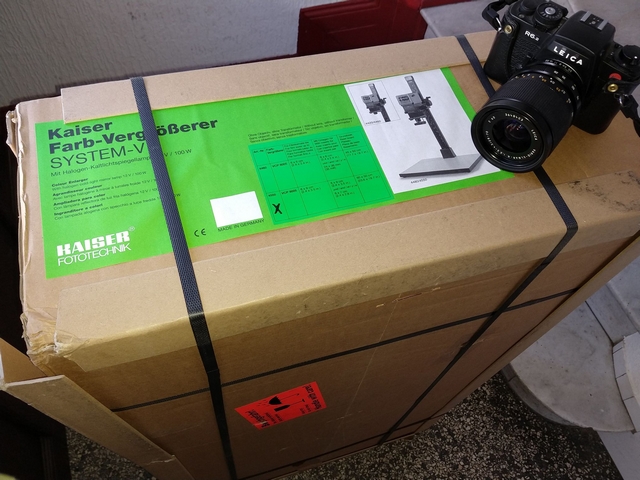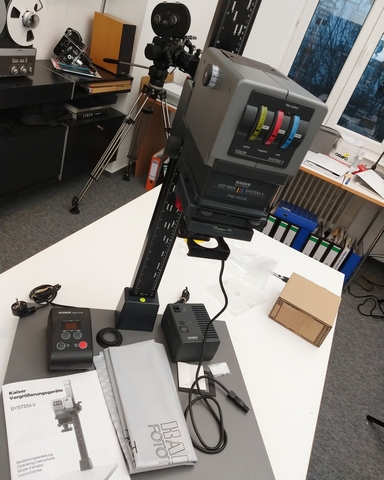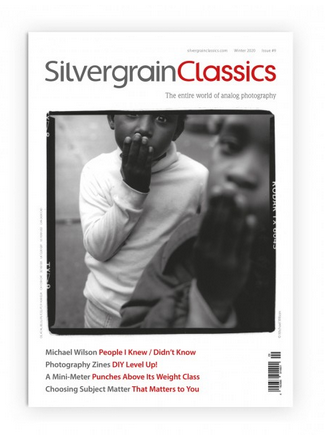Buying an enlarger? New or Second Hand?
By Christopher Osborne
The market for second hand enlargers has changed over the past 5 years. We look at the what has changed and discuss the pros and cons of new v’s second hand enlargers.
Marwan and Doug from Silvergrain Classics magazine unboxed a brand new Kaiser enlarger yesterday. I shared their excitement as I watched the video, as the Kaiser VCP 9005 came out of its box. Like many viewers, I could almost sense that new smell.
The video did set me thinking. Is it better to buy new or second hand? As always, this will depend on your budget, the amount of risk you are prepared to take, and what you want to achieve.
I own six enlargers. Of these, five have been purchased second hand. They range from the Durst M301 35mm enlarger that I bought with a summer’s wages back in 1978 to a monster 4×5 Omega with an Ilford head and an almost as large Durst L900 with a colour head. I bought the remainder for running training darkroom sessions.

The Kaiser V9005 Enlarger is picked from the warehouse
Marwan and Doug unbox a new Kaiser V9005 enlarger
There have been some changes in the market over the last five years. Back then, cheap enlargers were commonplace. School and University darkrooms were being cleared out and if you wanted a collection of similar enlargers, all you had to do was turn up with a large car, and a modest amount of cash.
Our enlarging requirements have changed too. In the last five years, many of us have discovered how much we like medium format photography. Back when our enlarger stock was being built, the amateur market was dominated by 35mm models. Simply because those Hasselblad’s, Mamiya’s and Rollei’s came with an eye-watering price tag. We have witnessed the price for medium format capable enlarger’s increase somewhere between 5-8 times in the last 5 years.
The quality of second-hand enlargers is dropping too. Much of the stock that is now appearing has come out of deep storage in lofts and garages. It is common to find that focusing mechanisms don’t run freely because the thin layer of grease on rails has deteriorated. That aluminium parts are oxidising and that movements don’t work properly. Plastic gears have deteriorated and break. Condensers often show signs of fungus and enlarging lenses are showing signs of balsam separation. I bought a black and white medium format enlarger which was home to a domestic light bulb instead of a proper enlarging bulb. Both of the power supplies for the Ilford Head and the Durst L900 have had to have electrical repairs to keep them alive. Each repair became an electrical engineering project and cost €350 because no longer available components had burnt out.

The Kaiser V9005 Enlarger arrives at Silvergrain Classics HQ

The Kaiser V9005 Enlarger has just been assembled
Five years ago, one could find an enlarger that had been owned & loved by a reluctant seller. More often than not, they came with all of the accessories, such as light mixing boxes and different sized negative frames. Today, a quick search on eBay will show that medium format mixing boxes and negative frames are between 50 and 100% more expensive than the equivalent 35mm part. Why? Because there is less of them, and so they are more often than not they are sold separately to the host enlarger.
So where are today’s stock of second-hand enlargers coming from? There is an increasing number of enlargers being auctioned at house clearance sales. This equipment is bought by traders rather than photographers. These traders are acutely aware of the potential sales price and are in no rush to sell. The overall price of parts is being driven up as many perfectly good enlargers are being broken up for parts, with the combined value of the parts being significantly greater than the sales price of a complete enlarger.
And, as darkroom photography is regaining popularity, many of the best enlargers are finding their way into the Chinese market.
Now, let’s talk numbers. Ironically, I couldn’t find this model listed in either fotoimpex.de or macrodirect.de, so I have priced it on the price listed at firstcall-photographic.co.uk. The enlarger shown in the unboxing video costs £1670 including VAT. The specification includes a variable mask glass negative holder for up to 6x9cm negatives and a 35mm fixed mask. And a new Rodenstock 50mm lens will set you back an additional £299 and an 80mm lens for medium format £329. Of course, you could start with second-hand lenses.
This compares to a mint condition second-hand colour Durst M670 (which will support negatives up to a smaller 6x7cm) listed on eBay.de priced at €650 (approx. £595). It comes with a good quality 50mm but needs a 6×7 negative frame which couldn’t be found anywhere on eBay at the time I wrote this.
www.secondhanddarkroom.co.uk has a similar specification second hand Kaiser V9005 enlarger with no lenses listed for £725, but it has already been reserved.
So, what should you do? Life is always a compromise. If you are just starting out, and want to see if you like the darkroom, then perhaps start with a good quality second hand 35mm enlarger? It can always be re-sold if you decide the darkroom is for you.
If you are serious about our photographic practice, then buy the best equipment you can afford. It is worth remembering that the second-hand equipment is already 35-40 years old, and is getting older. But if you do decide to invest in something new, then you can expect to still be using it in 35-40 years.
We have a favour to ask. We want to make these online articles free to the world. We see it as our contribution to the photographic community. You can help by subscribing to our awesome analogue photography magazine – https://shop.silvergrainclassics.com/subscriptions/

